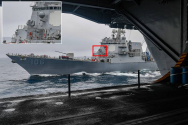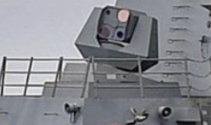Lockheed F-35’s Tally of Flaws Tops 800 as ‘New Issues’ Surface
’s F-35 jet remains marred by more than 800 unresolved software and hardware deficiencies of varying severity that could undercut readiness, missions or maintenance, according to updated statistics released Tuesday by the Pentagon’s testing office and Congress’s watchdog agency.
The number of “open deficiencies,” which include eight in the most serious Category 1, hasn’t improved significantly since the fighter’s development and demonstration phase ended in April 2018 “because testing continues to discover new issues,” Raymond O’Toole Jr., the acting head of the testing office, said in a statement to a House Armed Services subcommittee.
The 864 deficiencies pending last month “is slightly lower than the 872 we reported in March 2021,” Jon Ludwigson, a Government Accountability Office director said in a separate statement. More than 670 aircraft out of a potential 3,316 for U.S. services and foreign customers are operating today, with nine nations declaring that the aircraft has an initial operational capability.
“Deficiencies represent specific instances where the weapon system either does not meet requirements or where the safety, suitability, or effectiveness of the weapon system could be affected,” Ludwigson said.
Lockheed Martin spokesman Brett Ashworth said in an email that the Bethesda, Maryland-based contractor counts seven Category 1 deficiencies “awaiting government adjudication.” He said all of them are in Category 1B -- defined as having “a critical impact on mission readiness,” training or maintenance -- but none are in Category 1A, considered potentially life-threatening.
The GAO recommended in 2018 that the Pentagon’s F-35 program office resolve all critical deficiencies before making a decision on full-rate production, the most profitable phase for a contractor. Pentagon officials agreed and “stated that the resolution of critical deficiencies identified during testing will be addressed prior to the full-rate production decision,” Ludwigson said.
“According to program officials, at least seven of these critical deficiencies will be resolved prior to the completion of operational testing,” Ludwigson said.
Separately, the GAO said Lockheed already was falling behind on delivering the 158 jets that the program office was planning for this year.
“Almost all of the aircraft delivered so far in 2021 have been late, and Lockheed Martin is not projected to deliver all 158 aircraft, according to program officials,” Ludwigson said. “Although production has not met expectations to date, the F-35 program expects to produce a high number of aircraft in 2022.”



